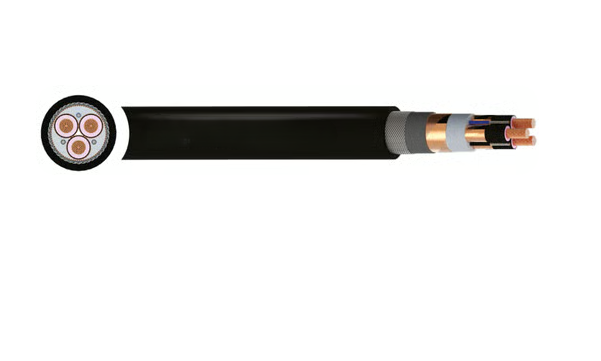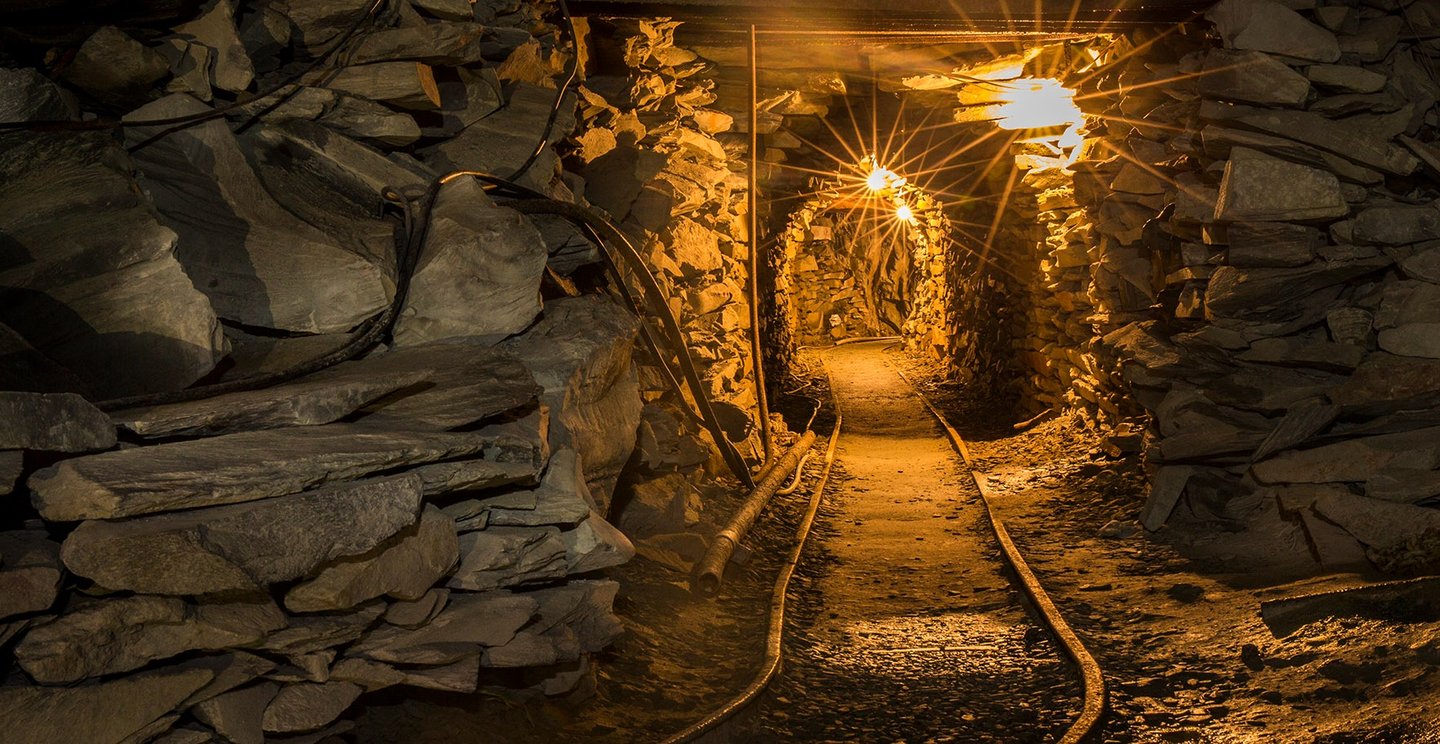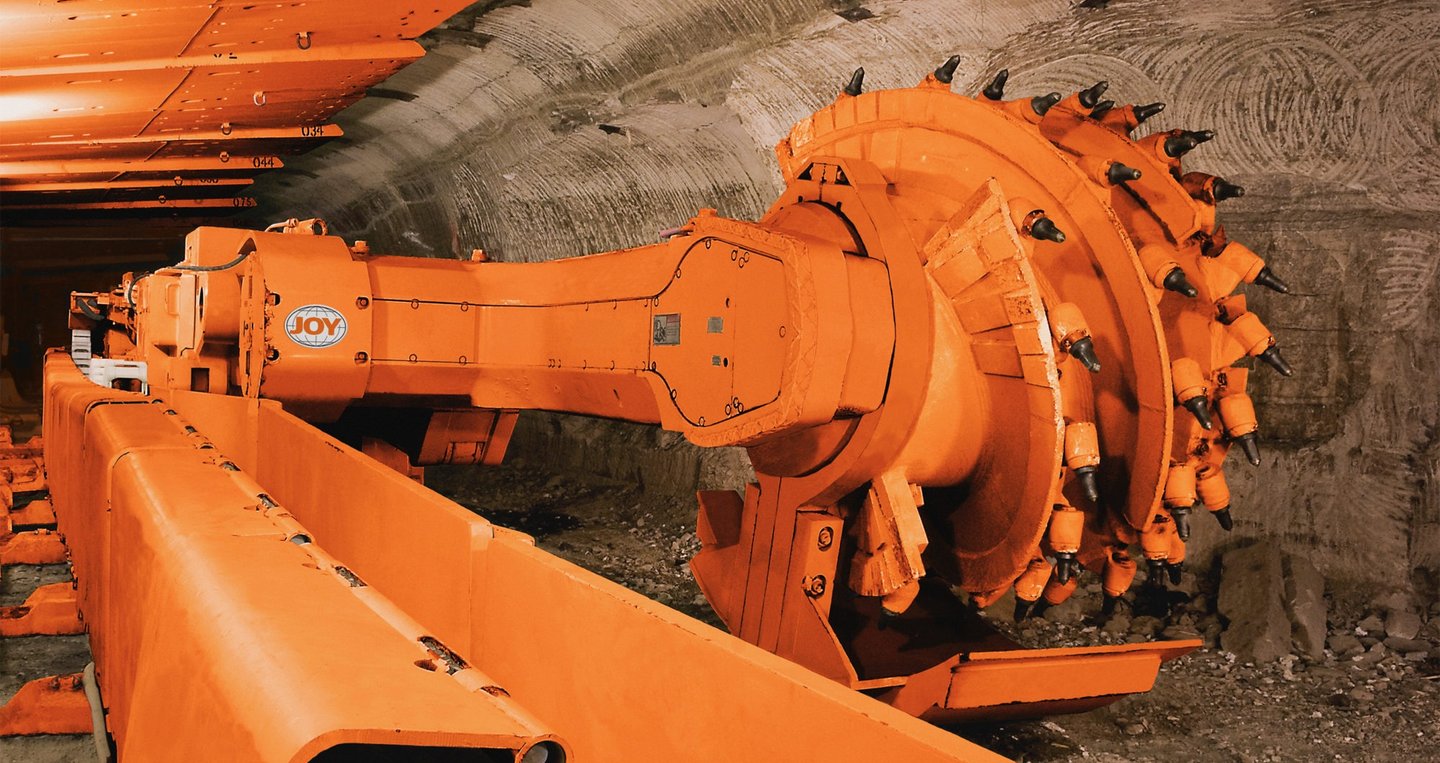Understanding (N)3GHSSHCH-3.6/6kV and 6/10kV Cables: Essential Components for Mining Operations
In the challenging world of underground mining, the infrastructure that powers operations must be as resilient as the miners themselves. Among the most critical yet often overlooked components are the specialized electrical cables that deliver power to equipment operating in some of Earth's most hostile environments. These cables must withstand crushing pressure, abrasive surfaces, chemical exposure, moisture infiltration, and frequent movement—all while safely conducting electricity at medium voltages. The (N)3GHSSHCH cable series represents a sophisticated engineering solution designed specifically for these demanding applications. Unlike standard industrial cables, these specialized mining cables incorporate multiple protective features and enhanced flexibility to ensure reliable performance where standard cables would quickly fail. They serve as the literal lifelines of underground operations, connecting vital equipment to power sources in environments where equipment failure can have serious safety and economic consequences.
5/21/20259 min read
Understanding (N)3GHSSHCH-3.6/6kV and 6/10kV Cables: Essential Components for Mining Operations
Introduction
In the challenging world of underground mining, the infrastructure that powers operations must be as resilient as the miners themselves. Among the most critical yet often overlooked components are the specialized electrical cables that deliver power to equipment operating in some of Earth's most hostile environments. These cables must withstand crushing pressure, abrasive surfaces, chemical exposure, moisture infiltration, and frequent movement—all while safely conducting electricity at medium voltages.
The (N)3GHSSHCH cable series represents a sophisticated engineering solution designed specifically for these demanding applications. Unlike standard industrial cables, these specialized mining cables incorporate multiple protective features and enhanced flexibility to ensure reliable performance where standard cables would quickly fail. They serve as the literal lifelines of underground operations, connecting vital equipment to power sources in environments where equipment failure can have serious safety and economic consequences.


Application Scenarios
Underground Mining Operations
Deep beneath the Earth's surface, mining operations depend on a complex network of electrical equipment—from powerful drilling machines to ventilation systems. The (N)3GHSSHCH cables excel in these environments by providing consistent power delivery while withstanding the unique challenges of subterranean settings. Their enhanced flexibility allows for routing through narrow passages and around tight corners, while their mechanical resistance protects against the constant threats of rock falls, heavy equipment contact, and geological shifts.
These cables must maintain their integrity not just under normal operating conditions, but also during emergencies when reliable power can be critical for evacuation systems and safety equipment. The combination of flexibility, durability, and safety features makes them particularly valuable in coal mines, hard rock mining, and mineral extraction operations where conditions are especially demanding.
Tunneling Projects
During tunnel construction for transportation, utilities, or hydroelectric projects, working conditions present similar challenges to mining but with additional demands. Construction equipment in tunneling projects typically moves along the developing tunnel path, requiring cables that can withstand repeated flexing, redeployment, and exposure to construction activities. The (N)3GHSSHCH cables are engineered to maintain performance even as they're regularly repositioned during the tunneling process.
In these applications, the cables must also resist the abrasive dust created by boring machines and blasting operations, as well as the concrete slurry and chemical agents used in tunnel reinforcement. The robust construction of these specialized cables ensures continuous operation even as the tunnel environment evolves throughout the construction process.
Stationary and Mobile Equipment
Mining operations employ a diverse range of equipment with varying power requirements. Stationary installations such as pumping stations, conveyor systems, and ventilation units require reliable power connections that can withstand environmental stresses while remaining in a fixed position. Meanwhile, mobile equipment such as drill rigs, continuous miners, and shuttle cars need cables that can accommodate constant movement and flexing.
The (N)3GHSSHCH cable design accommodates both scenarios by incorporating construction features that allow for the repeated flexing needed by mobile equipment while providing the durability required for stationary installations. This versatility reduces the complexity of cable inventory management at mining sites, as the same cable type can serve multiple purposes throughout the operation.
Indoor and Outdoor Environments
Modern mining operations often span both underground and surface facilities, requiring cables that can transition between these distinctly different environments. The (N)3GHSSHCH cables are designed to function across this spectrum, whether installed in wet underground galleries, dry processing areas, or outdoor connecting infrastructures.
Their resistance to moisture, UV radiation, temperature variations, and chemical exposure enables deployment in virtually any part of a mining operation. This adaptability is particularly valuable at the interface between underground and surface operations, where cables may experience the greatest range of environmental conditions.


Electrical and Mechanical Specifications
Voltage Ratings
The (N)3GHSSHCH cables are available in two primary voltage classes: 3.6/6kV and 6/10kV. These medium voltage ranges address the power requirements of most mining equipment. The lower voltage class (3.6/6kV) is typically used for smaller machinery and auxiliary systems, while the higher voltage class (6/10kV) serves larger equipment with greater power demands, such as main drives for crushing machinery or primary ventilation systems.
These voltage ratings represent the cable's nominal operating voltage (Um) and test voltage respectively. The ability to maintain electrical integrity at these voltage levels, even under mechanical stress, is fundamental to the cable's performance in mining applications.
Conductor Details
At the heart of these cables are Class 5 flexible stranded copper conductors. Unlike rigid solid conductors, these consist of numerous fine copper strands bundled together to create a highly flexible yet electrically efficient conductor. The Class 5 designation refers to the level of flexibility according to international standards, indicating a high strand count optimized for applications requiring frequent movement.
This flexible construction allows the cables to bend without breaking the conductor, enabling installation in confined spaces and accommodation of equipment movement. The copper material provides excellent conductivity, minimizing power losses over extended cable runs—a crucial consideration in mining operations where distances from power sources to equipment can be substantial.
Insulation and Sheathing
The electrical insulation consists of specialized rubber compounds engineered to maintain their properties even when subjected to thermal cycling, mechanical stress, and environmental exposure. This insulation layer is crucial for maintaining electrical separation between conductors and preventing short circuits.
Both the inner and outer sheaths utilize Low Smoke Zero Halogen (LSZH) compounds, representing a significant safety advancement over traditional materials. In the event of fire, these materials produce minimal smoke and no halogenated compounds, reducing the risk of toxic gas inhalation in confined underground spaces. This characteristic is particularly valuable in mining emergencies, where visibility and air quality can directly impact evacuation success.
Armoring
The steel wire braid (SWB) armor provides mechanical protection critical for mining environments. This layer consists of braided steel wires surrounding the cable core, creating a flexible yet highly resistant barrier against crushing forces, abrasion, and puncture damage. Unlike rigid armor types, the braided construction maintains the cable's flexibility while significantly enhancing its durability.
This armoring allows the cable to withstand the rough handling inherent in mining operations, including dragging across rough surfaces, pressure from heavy equipment, and impact from falling rocks or tools. The SWB design represents an optimal balance between protection and flexibility, addressing the dual requirements of mining cable applications.
Temperature Range
The cables demonstrate impressive thermal performance, operating reliably in temperatures ranging from -40°C to +80°C when in fixed installations, and +5°C to +80°C when subjected to flexing. This broad temperature range accommodates both deep mines where ambient temperatures can be quite high due to geothermal effects and surface operations in cold climates.
The different temperature ranges for fixed versus flexed applications reflect the increased mechanical stress that occurs when cables are moved at low temperatures. The rubber compounds used in the cable construction maintain their elasticity within these specified ranges, ensuring electrical integrity even under thermal stress.
Bending Radius
The minimum bending radius specifications—6 times the overall diameter for fixed installations and 10 times for flexed applications—provide crucial guidance for proper installation and use. These parameters ensure that internal stresses within the cable remain within acceptable limits during bending, preventing damage to conductors, insulation, or protective layers.
This specification is particularly important in mining applications, where space constraints often require cables to navigate tight corners and confined spaces. Adherence to these bending radius limitations maximizes cable lifespan and maintains operational reliability.


Construction Features
Core Configuration
The typical configuration of (N)3GHSSHCH cables includes 3 power cores for three-phase electricity transmission, 3 earth conductors for enhanced safety grounding, 3 control conductors for equipment operation signals, and a monitoring conductor (often referred to as 3+3+3+UL). This integrated design eliminates the need for separate power and control cables, simplifying installation and reducing potential points of failure.
The inclusion of multiple earth conductors enhances safety by providing redundant grounding paths, addressing the heightened safety requirements of underground operations. Similarly, the dedicated control conductors allow for equipment operation and monitoring without introducing electrical interference into control signals.
Semi-Conductive Layers
Semi-conductive layers applied over both the conductors and insulation serve the critical function of managing electrical stress within the cable. These layers create a smooth electrical transition between the conductor and insulation, preventing localized stress concentrations that could otherwise lead to insulation breakdown over time.
By distributing the electrical field evenly throughout the insulation, these layers enhance the cable's long-term reliability and extend its operational lifespan—particularly important in mining applications where cable replacement is both costly and operationally disruptive.
Monitoring Conductor
The copper wire screen that serves as a monitoring conductor enables real-time assessment of cable integrity. This feature allows for the detection of insulation damage or moisture ingress before these issues develop into catastrophic failures. By connecting this conductor to monitoring equipment, maintenance teams can implement predictive maintenance practices, addressing potential issues before they impact operations.
This monitoring capability is particularly valuable in mining environments where visual inspection of installed cables is often difficult or impossible, and where cable failures can have serious operational and safety consequences.
Central Filler
The rubber compound central filler, supported by a textile polyester core, provides structural stability to the cable assembly. This component maintains the cable's circular cross-section while preventing compression of the power and control cores. The filler's elasticity complements the cable's overall flexibility while ensuring that individual components remain properly positioned relative to each other.
This structural integrity is essential for maintaining consistent electrical performance during the bending, twisting, and pulling that mining cables routinely experience throughout their operational life.


Frequently Asked Questions (FAQ)
Q1: What makes (N)3GHSSHCH cables suitable for mining applications?
The exceptional suitability of (N)3GHSSHCH cables for mining environments stems from their comprehensive design addressing multiple challenges simultaneously. Their Class 5 flexible copper conductors maintain electrical performance while accommodating movement. The LSZH sheathing provides enhanced safety in confined spaces where emergency evacuation could be complicated by smoke or toxic gases. The steel wire braided armor offers superior mechanical protection against the constant physical hazards present in mining operations.
Additionally, their moisture resistance, chemical resilience, and broad temperature tolerance ensure reliable operation across the diverse conditions encountered in mining environments. This combination of electrical performance, mechanical durability, and safety features creates a cable specifically engineered for the extreme demands of underground operations.
Q2: Can these cables be used in both fixed and mobile installations?
Yes, the dual-purpose design of (N)3GHSSHCH cables makes them appropriate for both stationary equipment and mobile machinery. For fixed installations such as transformer connections or distribution panels, they provide the durability and electrical performance required for long-term reliability. For mobile equipment like drilling rigs or continuous miners, their enhanced flexibility, reinforced construction, and resistance to repeated flexing enable them to withstand constant movement without premature failure.
The cables' specifications include different performance parameters for fixed versus flexed applications, acknowledging the additional stresses experienced during movement. By adhering to these guidelines—particularly regarding temperature limits and bending radii—operators can successfully deploy these cables across the full spectrum of mining equipment.
Q3: How do LSZH sheaths benefit underground operations?
The Low Smoke Zero Halogen sheathing provides critical safety benefits in the confined spaces typical of underground mining. Traditional cable materials such as PVC release dense smoke and toxic halogenated compounds when exposed to fire, rapidly reducing visibility and creating respiratory hazards that can impede evacuation and rescue efforts. In contrast, LSZH materials produce significantly less smoke and no halogenated compounds, maintaining better visibility and air quality during fire emergencies.
This characteristic is particularly valuable in underground environments where ventilation is limited and evacuation routes may be long and complex. The reduced toxicity also minimizes corrosive damage to sensitive equipment that might otherwise be affected by halogen-containing compounds, potentially preserving critical safety systems during emergencies.
Q4: What is the significance of the monitoring conductor?
The monitoring conductor represents an advanced safety and maintenance feature that transforms these cables from passive power transmission components to active elements in a predictive maintenance strategy. By continuously monitoring the electrical integrity of the cable insulation, this conductor enables early detection of developing problems such as moisture ingress, insulation degradation, or mechanical damage.
This early warning capability allows maintenance teams to schedule repairs or replacements during planned downtime rather than responding to emergency failures. In mining operations, where unplanned downtime can cost thousands of dollars per minute and may impact production targets, this predictive capability delivers significant operational and economic benefits while enhancing overall safety.
Q5: Are these cables compliant with international standards?
Yes, (N)3GHSSHCH cables are manufactured in accordance with international standards such as VDE0250, ensuring consistent quality and reliable performance. These standards establish minimum requirements for electrical performance, mechanical durability, fire resistance, and safety features. Compliance with these standards provides operators with assurance that the cables will perform as expected under specified conditions.
Adherence to recognized standards also facilitates regulatory approval and insurance compliance for mining operations, which typically face stringent safety requirements. Many mining jurisdictions require equipment to meet specific standards, making this compliance an essential characteristic for cables used in these applications.

Conclusion
The selection of appropriate electrical cables represents a critical engineering decision for mining operations, with direct implications for safety, reliability, and operational efficiency. The (N)3GHSSHCH cable series, with its specialized design features addressing the unique challenges of underground environments, offers a comprehensive solution for medium voltage power distribution in these demanding applications.
The integration of flexible conductors, protective armoring, safety-enhancing LSZH materials, and monitoring capabilities creates a product specifically engineered for the mining industry's needs. By implementing proper installation practices, respecting operational limitations, and establishing regular inspection protocols, mining operators can maximize the service life and reliability of these essential infrastructure components.
In an industry where equipment failure can have serious consequences ranging from production losses to safety emergencies, investing in properly specified, high-quality cables like the (N)3GHSSHCH series is not merely a technical decision but a fundamental operational necessity. These specialized cables, though often overshadowed by more visible mining equipment, remain essential enablers of safe and productive underground operations.


